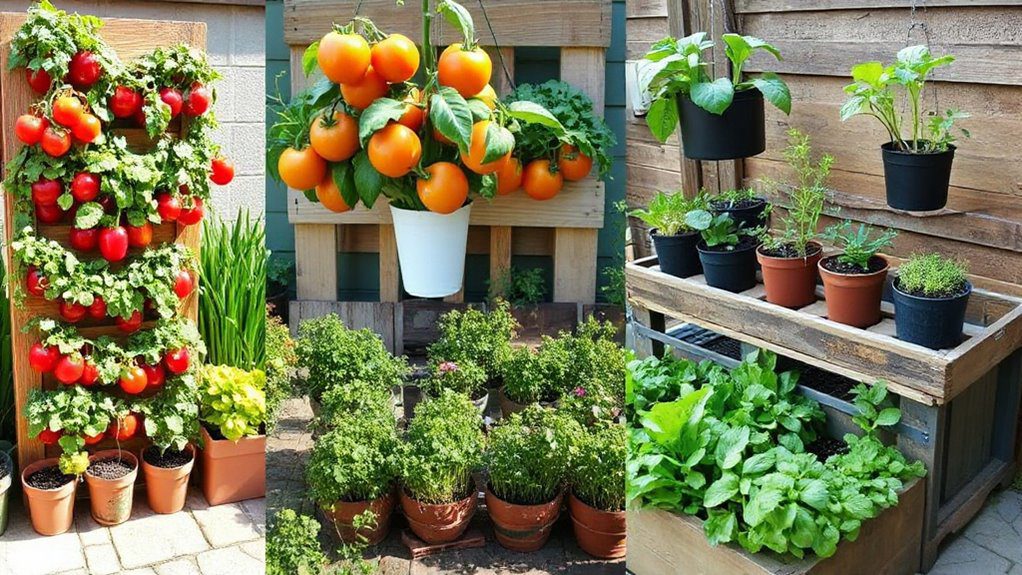Looking to make the most of a tiny garden space? Discover keyhole gardens that save room with central compost. Try vertical gardening by growing upwards with trellises or wall planters. Mix plants like tomatoes and basil for pest control with companion planting. Use raised beds for better drainage and warmth. Go for space-saving veggies such as lettuce or peas. Simple tricks can expand your harvest and spark creativity in your green thumb adventures. Curious for more?
Key Takeaways
- Implement keyhole gardens for nutrient-rich soil and easy maintenance in compact spaces.
- Use vertical gardening with trellises to maximize space for climbing crops.
- Practice companion planting for efficient space use and natural pest control.
- Construct raised beds to improve drainage and allow dense planting in small areas.
- Extend the growing season with frost-tolerant crops and protective covers.
Keyhole Garden Design
Imagine converting your small backyard into a flourishing oasis with a keyhole garden design! This groundbreaking raised bed is perfect for small spaces, offering a circular layout with a compost bin at the center.
You’ll love how easy it’s to maintain while providing nutrient-rich soil for your plants. With a keyhole garden, you can plant closer together—just 8 inches apart—maximizing your yield.
The raised bed structure gives your plants more root space than traditional pots. Plus, you can build it yourself using materials like wood, rocks, or recycled items.
It’s an inviting, cost-effective project that improves any small space.
Vertical Gardening Techniques
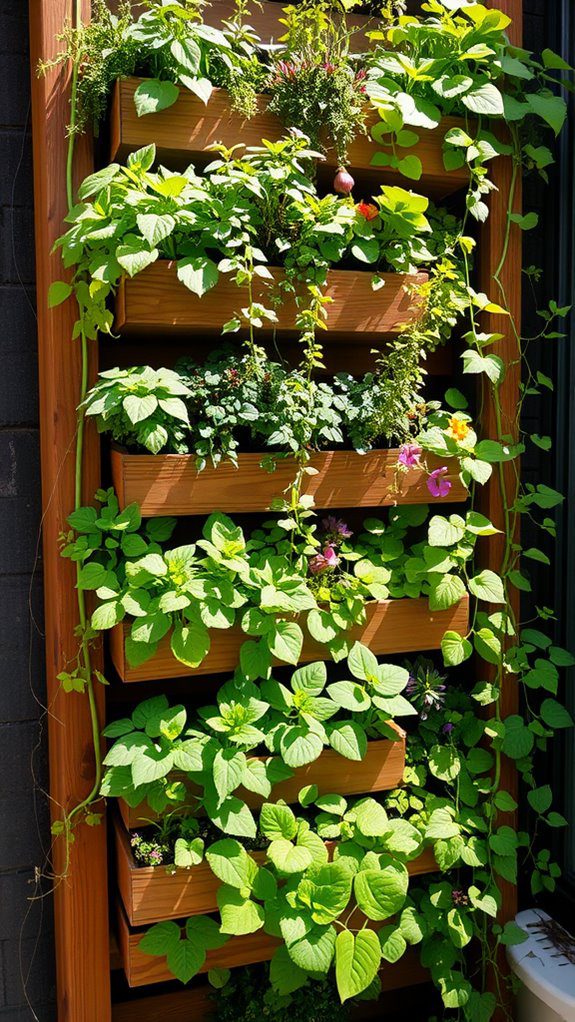
Have you ever thought about going upwards with your garden instead of outwards? Vertical gardening is a game-changer for your small vegetable garden.
By using trellises, wall planters, or hanging pots, you can:
- Optimize your space and grow cucumbers, peas, or tomatoes.
- Boost your yields with better air circulation and sunlight.
- Add visual charm while attracting beneficial insects.
- Choose from DIY projects or pre-made kits suitable for any skill level.
Imagine your garden thriving vertically, becoming a buzzing hub of life and beauty.
You’ll feel part of a vibrant community, where nature and neighbors connect harmoniously!
Companion Planting Strategies
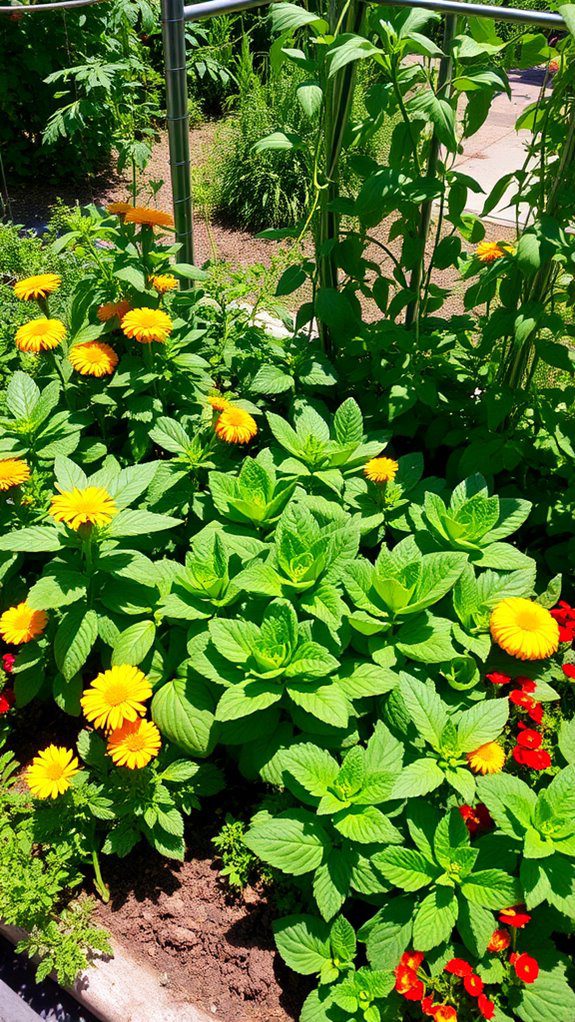
While growing a garden might seem straightforward, companion planting strategies add a layer of excitement and discovery.
Imagine your vegetable garden as a vibrant community where leafy greens and other plants support each other. By pairing basil with tomatoes, you’ll enhance flavor and keep pesky aphids at bay.
Try the Three Sisters method: beans, corn, and squash work together like a dream team. Beans enrich the soil with nitrogen, corn offers sturdy support, and squash shields the ground.
Pair low-growing lettuce with towering tomatoes to optimize space and light. Remember, marigolds attract helpful insects, maintaining harmony in your garden.
Utilizing Raised Beds

Imagine this: a garden where plants almost seem to leap out of the ground, thriving in their own little raised worlds!
Raised beds enhance your small garden by boosting drainage and soil aeration, creating the perfect growing space. Here’s how they can make a big difference:
- Material Options: Use wood or stone to customize raised beds to fit any nook.
- Soil Magic: Fill with biodegradable materials and nutrient-rich soil to reduce watering needs.
- Temperature Control: Enjoy longer growing seasons with warmer soil.
- Dense Planting: Plant closer, maximizing yield in compact areas.
It’s like giving your veggies a VIP seat!
Selecting Space-Saving Vegetables
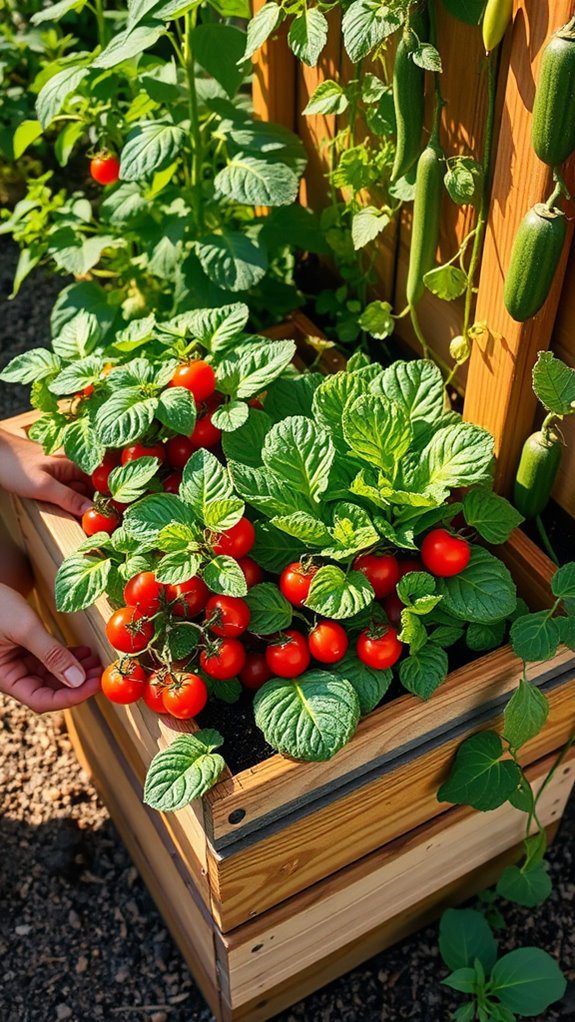
Raised beds have given your veggies the royal treatment, but let’s up the ante by picking the perfect plants for your space.
In your small space, choose compact varieties like Masai beans and Mini Bell peppers to enhance your garden’s potential. These little powerhouses yield big results!
Fast-maturing crops like Sugar Buns corn and Lilliput melons offer quick harvests, keeping your garden productive.
Embrace vertical gardening with trellises for cucumbers and peas—saving ground space and adding a vertical flourish.
Plant densely, at 8 inches apart, squeezing in more veggies.
Select your favorites like basil and tomatoes, ensuring delicious harvests!
Extending the Growing Season
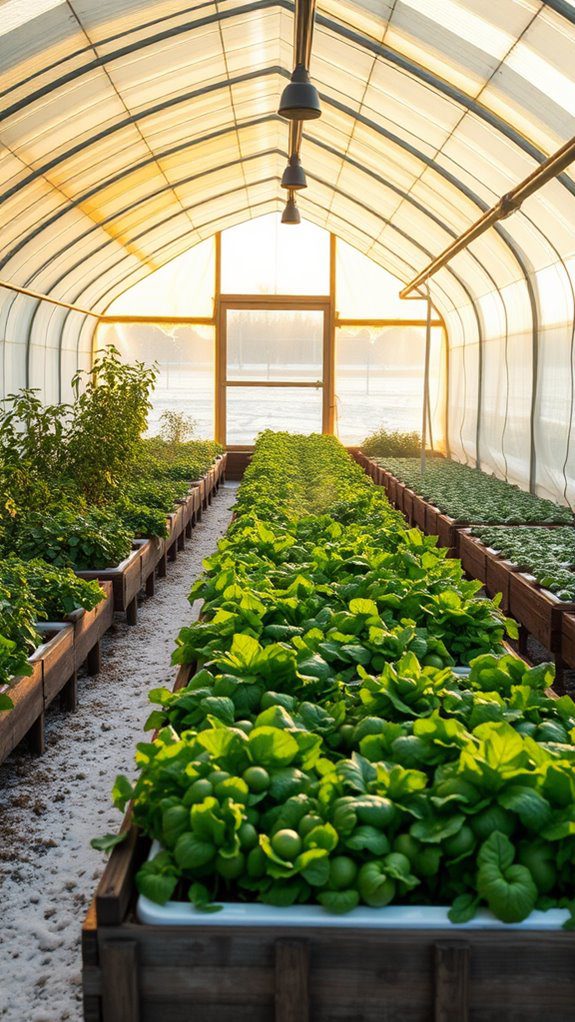
Craving more time to enjoy your garden’s bounty? Extend the growing season and enhance your vegetable yield with these clever tips.
Raised beds warm the soil earlier and hold heat longer, perfect for USDA zones 7-10. You’ll love the extra 2-6 weeks of harvest!
Consider these strategies:
- Raised Beds: Heat retention extends the season.
- Keyhole Gardens: Compost generates warmth, adding 2-4 weeks.
- Frost-Tolerant Crops: Plant broccoli, cabbage, and cauliflower for extended growing.
- Row Covers/Cloches: Shield plants from frost for early spring and late fall.
Get ready to enjoy your extended growing season!
Troubleshooting Common Gardening Issues

While you’re enjoying those extra weeks of harvest from your garden, you might encounter a few hiccups along the way. Don’t worry—every gardener does!
Watering issues can sneak up on you, but watering in the morning or evening helps. When it’s hot, give your plants a bit of shade to keep them happy. Better drainage is key, especially if your soil feels like clay.
Check those container holes to avoid waterlogged roots. Pests? Handpick them or use soap sprays. Remember, not all bugs are bad—some like rolli-pollis are your garden’s friends!
Got rodents? A spicy chili spray works wonders.
Choosing the Right Containers
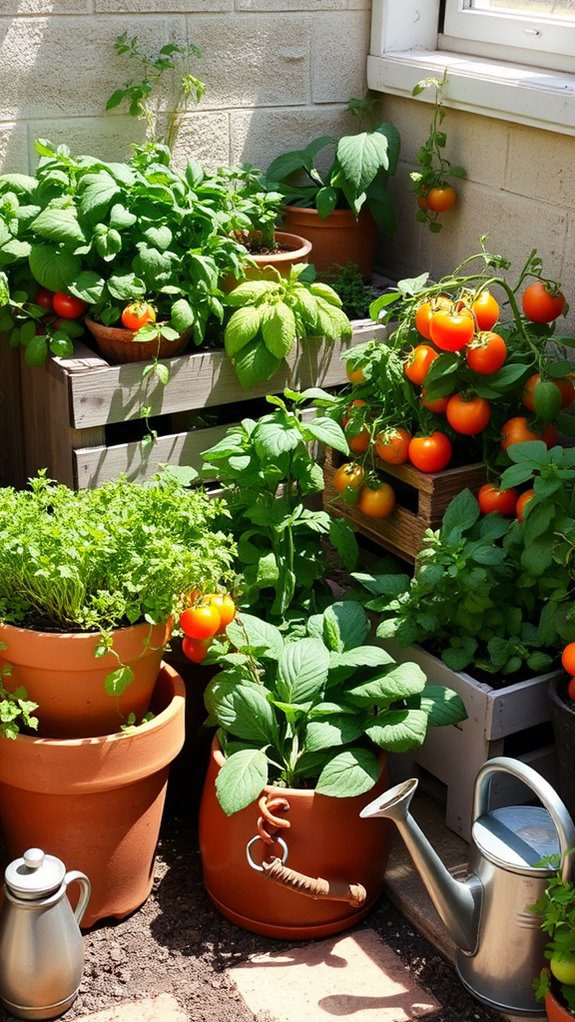
Imagine converting your small vegetable garden into a vibrant patchwork of colors and textures with the right containers!
Start by selecting options with drainage holes to avoid waterlogged roots. Here’s how you can choose wisely:
- Material Variety: Consider ceramic, terra cotta, plastic, wood, or fabric for durability and cost.
- Get Creative: Upcycle old wheelbarrows or buckets for a personal touch and eco-friendly flair.
- Aesthetic Appeal: Pick designs and colors that complement your outdoor space for added beauty.
- Size Matters: Choose containers that fit your veggies’ needs, ensuring proper root growth.
Join the container gardening community and watch your garden thrive!
Soil and Fertilization Tips
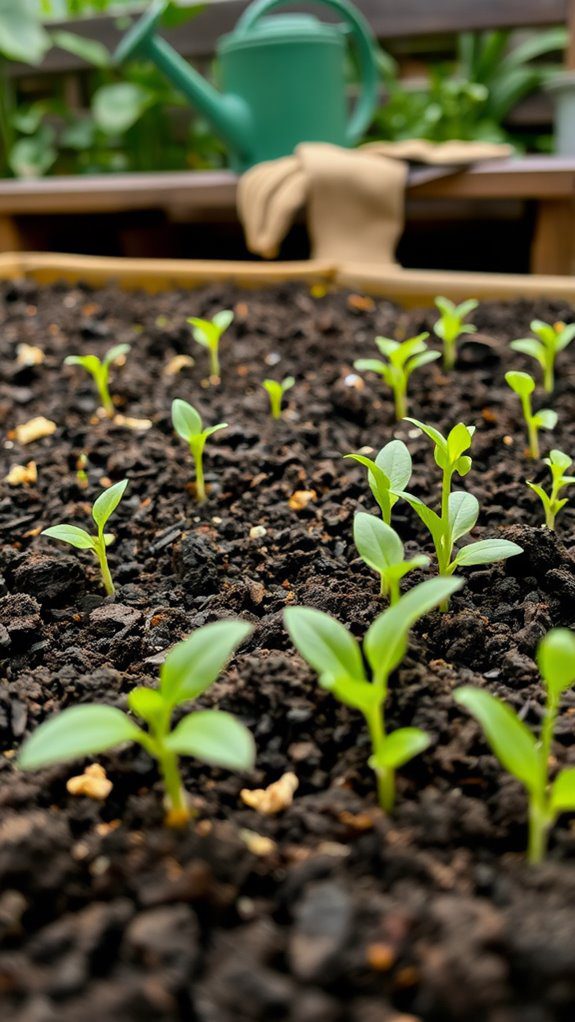
When it comes to planting your small vegetable garden, choosing the right soil can make all the difference. A soilless potting mix is your best friend in container gardening, ensuring roots enjoy excellent drainage and aeration. Think of it as luxury living for your plants!
Most veggies need at least 12 inches of soil depth, so pick containers that allow roots to stretch comfortably. Boost your mix with organic fertilizers or homemade compost—it’s like giving your plants a vitamin boost.
And don’t forget those drainage holes! They’re your secret weapon against waterlogging. Happy gardening, and may your veggies thrive!
Engaging With the Gardening Community

Now that you’ve got the scoop on soil and fertilizers, let’s explore how connecting with fellow gardeners can boost your green thumb game.
Engaging with the gardening community opens doors to knowledge and friendships. Imagine these four ways to connect:
- Join a community garden to swap Garden Ideas and enjoy camaraderie.
- Attend local workshops to learn cool techniques and meet fellow enthusiasts.
- Immerse yourself in Social Media to share your triumphs and troubleshoot with a global audience.
- Build bonds with local farmers for high-quality seedlings.

